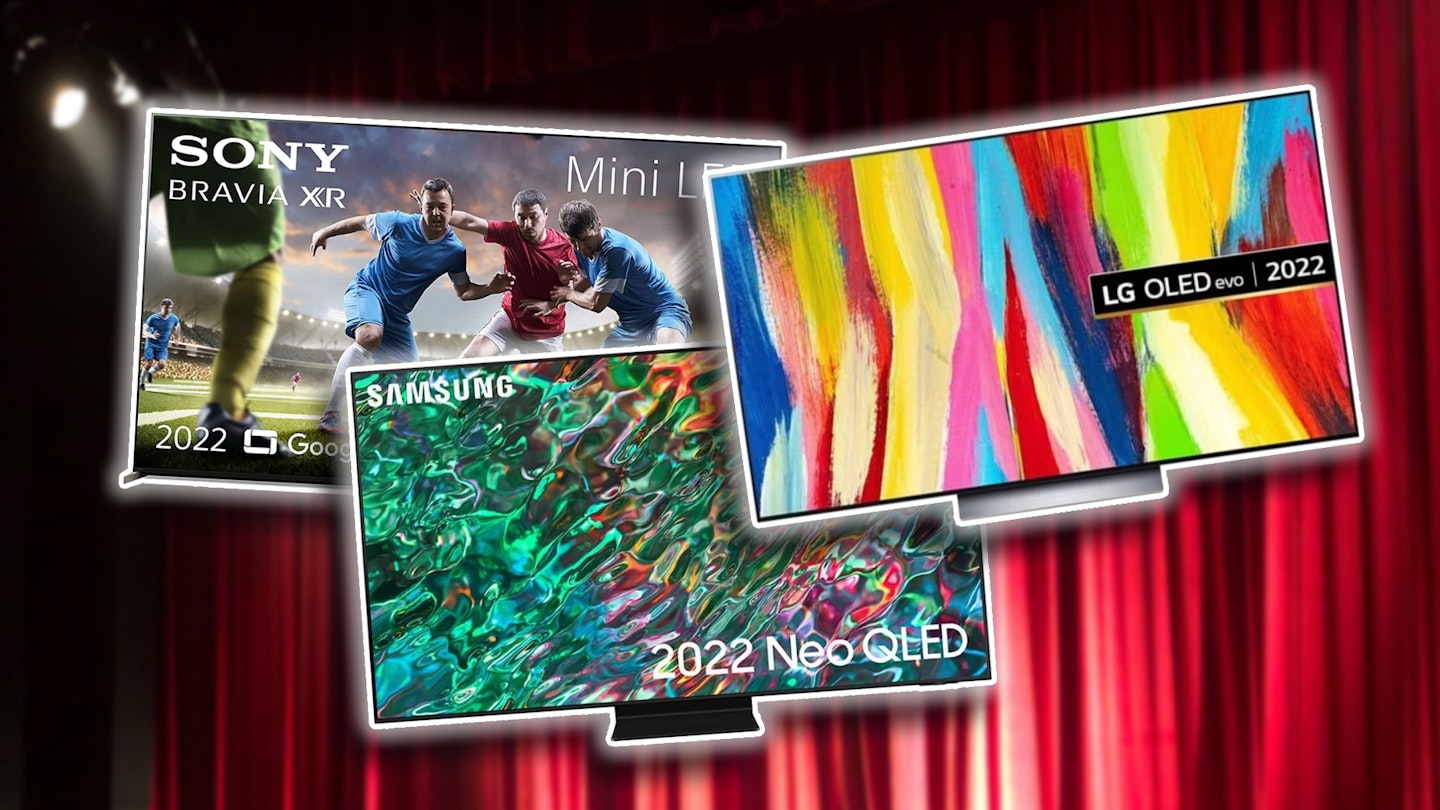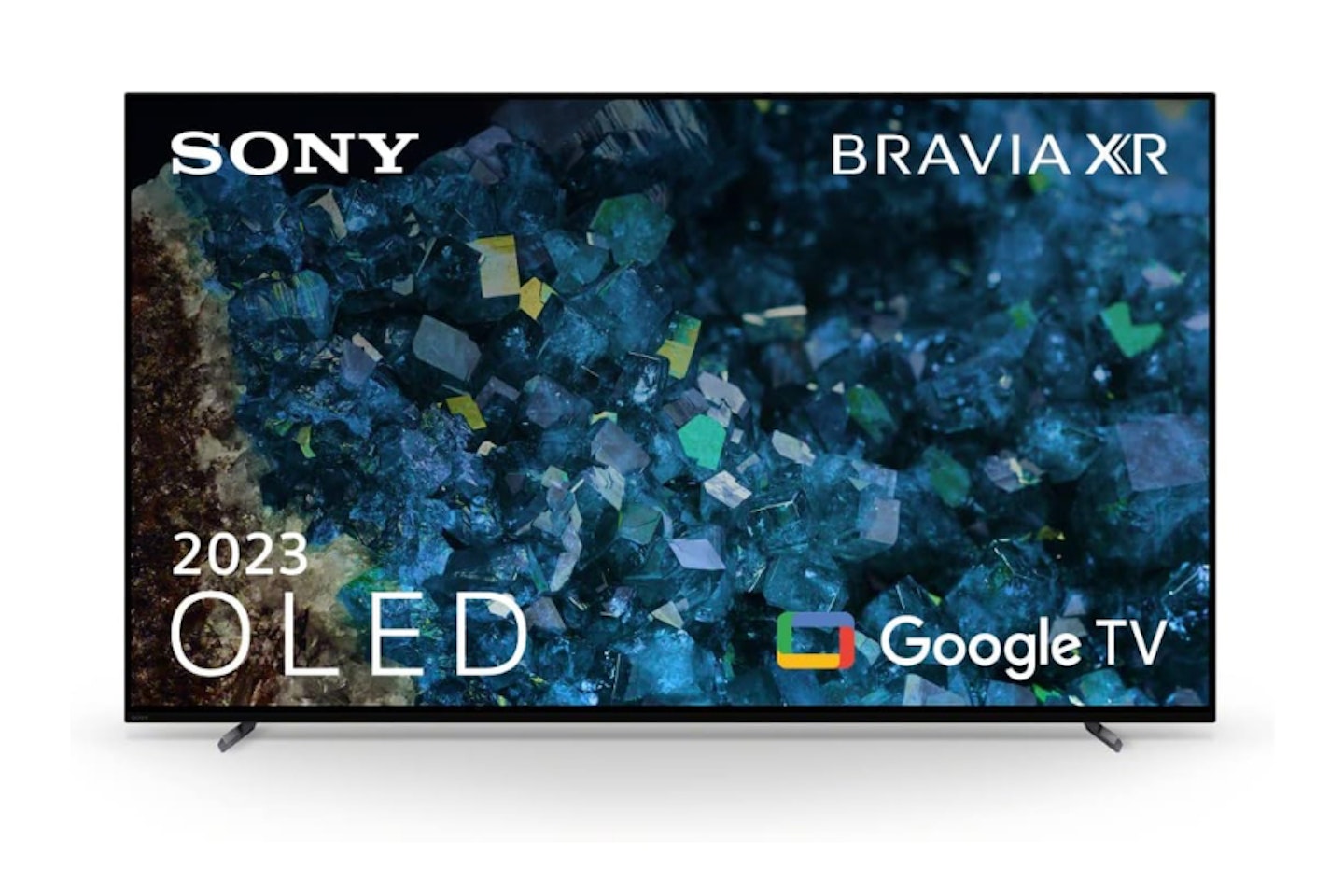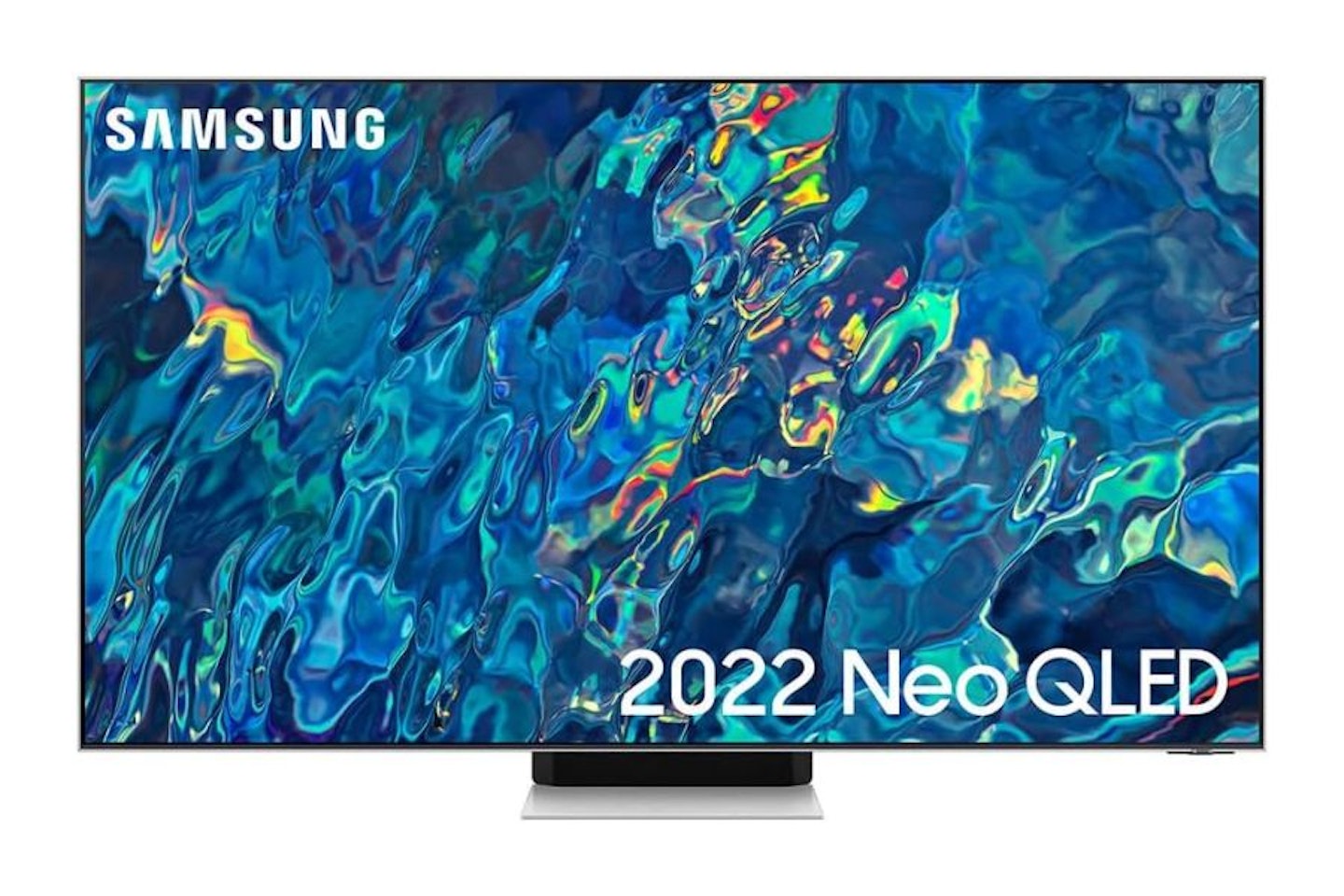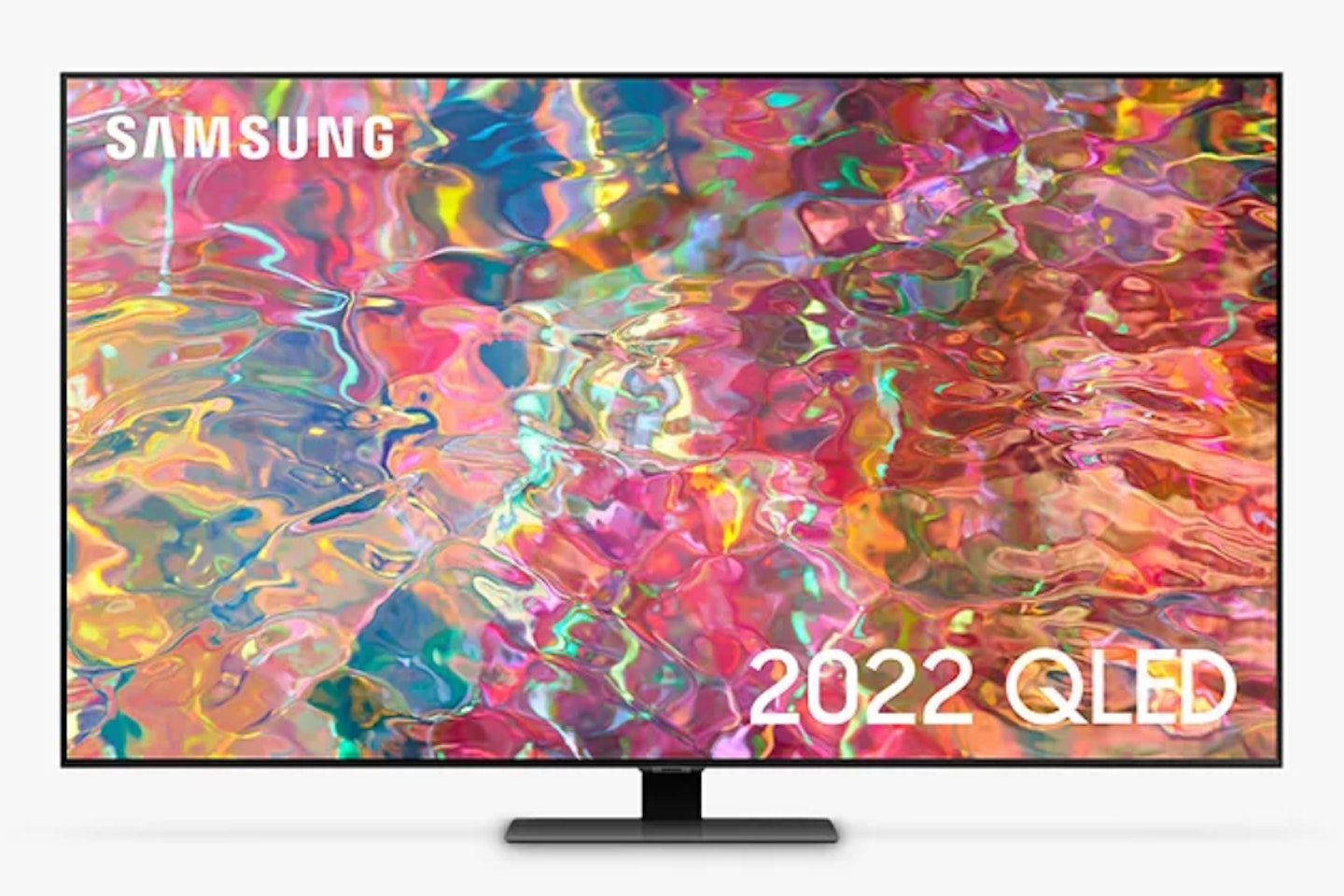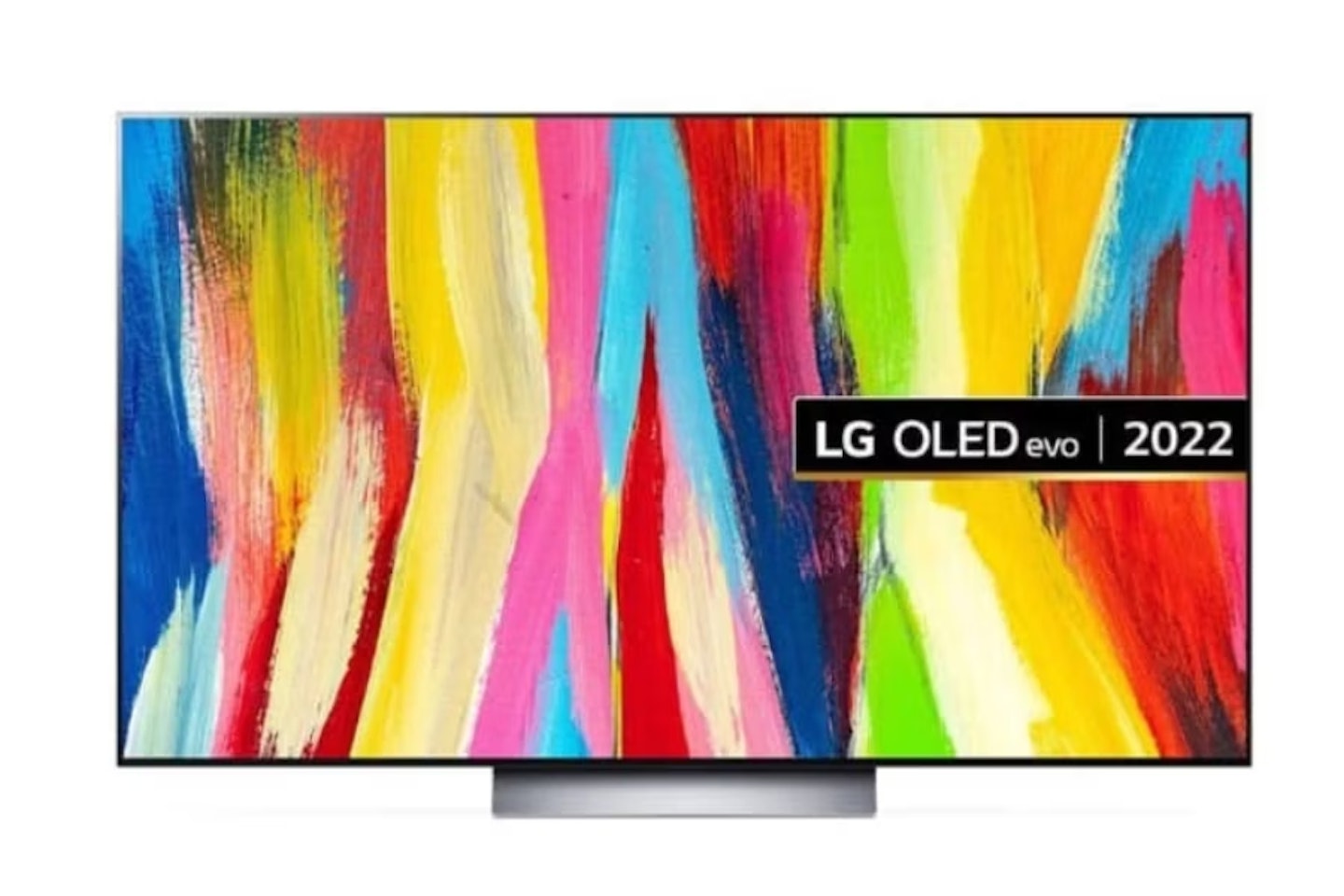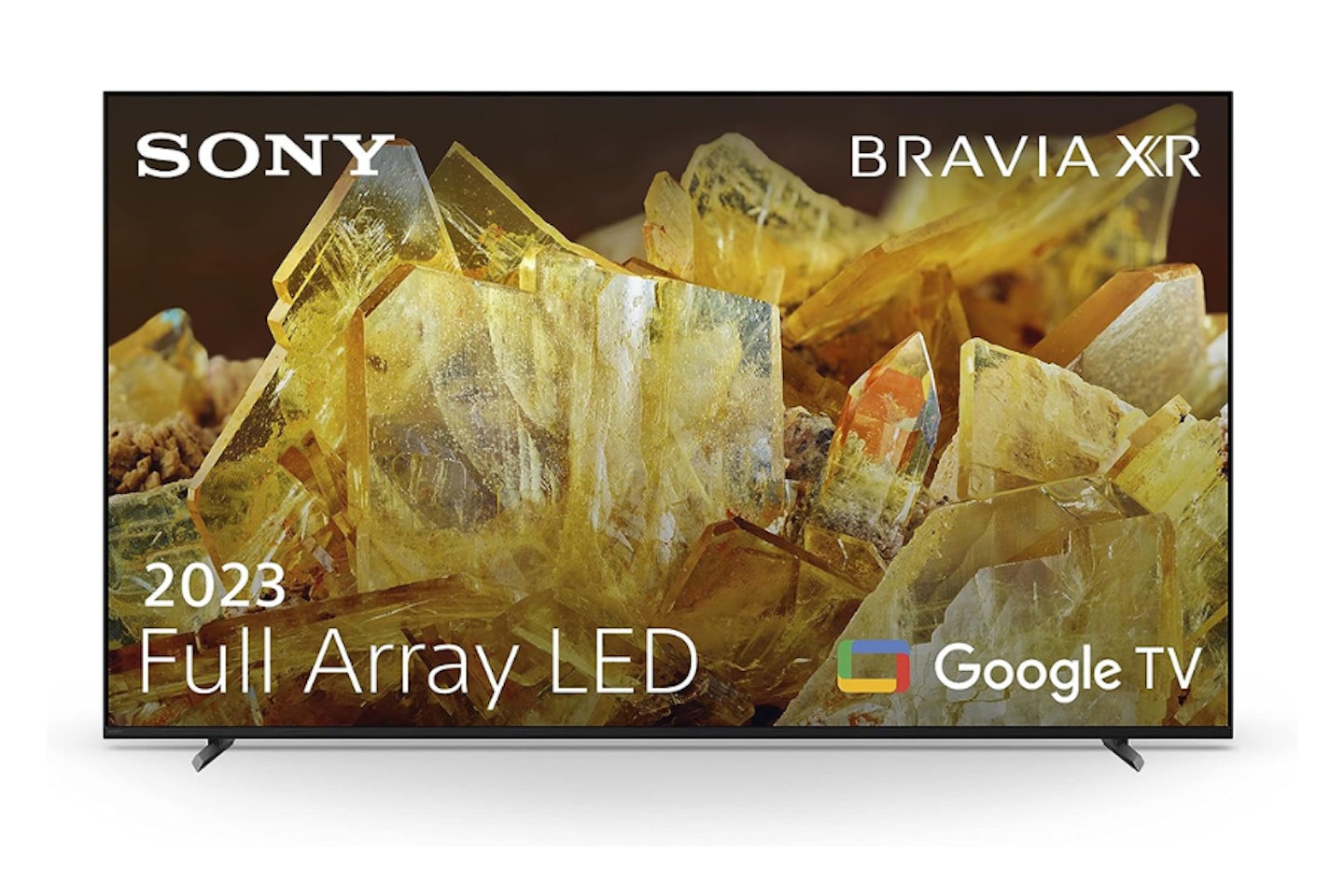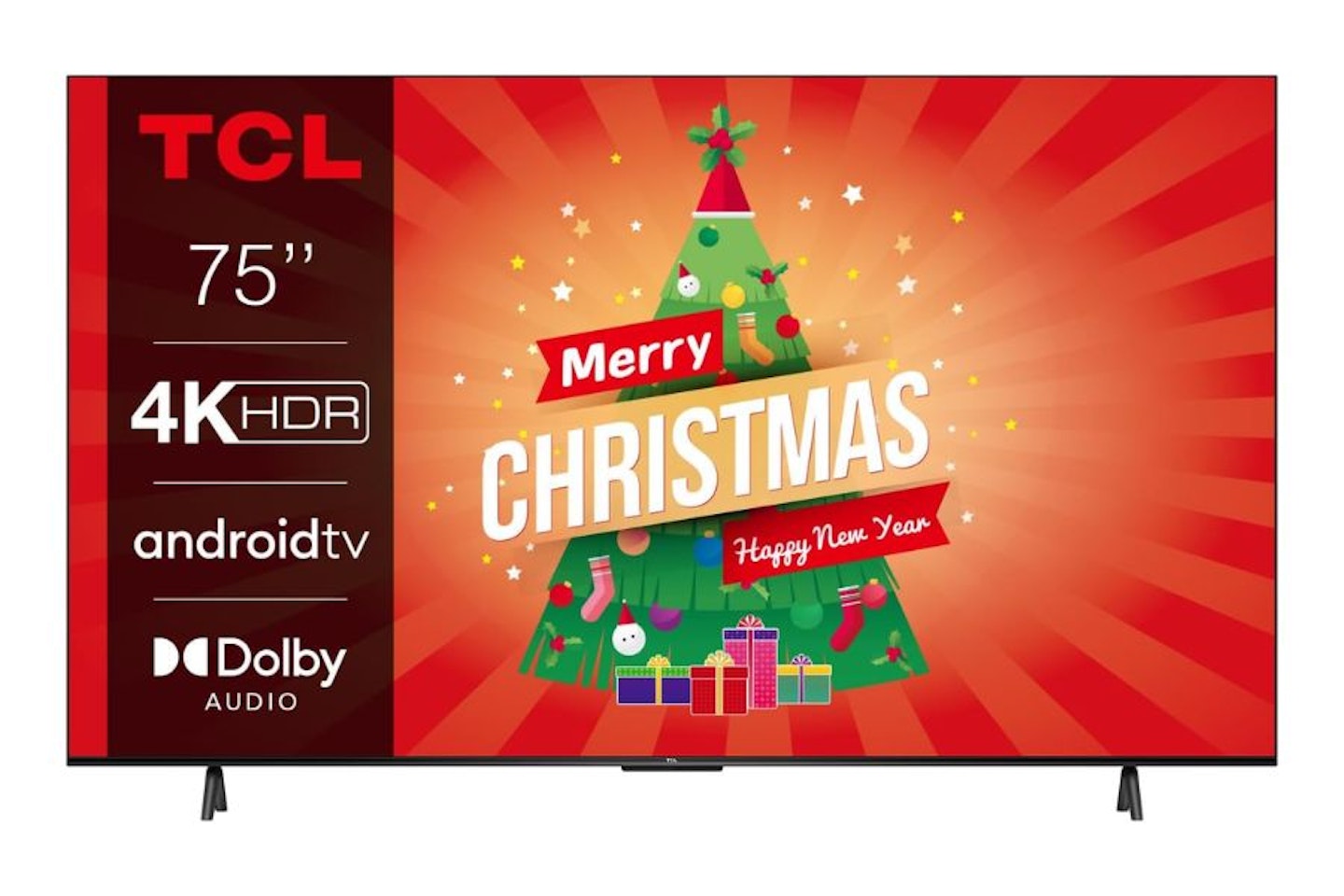Fancy one of the biggest and best 75-inch TVs you’ll likely see outside your local cinema? Sometimes there’s nothing better than settling down for a movie night at home with a bowl of popcorn and a great TV. Nothing can beat that experience of powering up a huge screen in your very own room for the first time. You'll never go back once you've witnessed a 4K picture at this scale.
Those who have upgraded their TV will know what it feels like to have all of that extra real estate suddenly. Any screen this large genuinely transforms your viewing, taking immersion to the next level. If you thought that going from a 55-inch TV to a 65-inch TV was a game-changer or buying one as your first TV, you’re in for a real thrill.
The best 75-inch TVs of 2024 at a glance
• Best overall 75-inch TV: Sony BRAVIA XR-77A80L - View at Amazon
• Best budget 75-inch TV: Hisense 75-inch VIDAA Smart TV 75A6KTUK - View at Amazon
• Best 75-inch TV for gaming: Samsung 75-inch QN95B Neo QLED 4K Smart TV (2022) - View at Amazon
• Best OLED 75-inch TV: LG OLED C2 77-inch 4K Smart TV - View at Amazon
The larger a screen gets, the more impressive the effect, inch-for-inch. But there’s more to this than sheer size and scale. What about all of the different display technologies on the market? What is HDR and refresh rate? And how will these affect my picture? We have a handy guide at the end of the article to cover these issues and more.
Not only have we selected the best 75-inch TVs for you, but we’ve also put them into handy categories to help you choose. Not all brands offer 75-inch sets, but we’ve also included some 77-inch models, so these are approaching the gargantuan 80-inch TV category. Unsurprisingly, they’re all smart TVs as well, so you’ll be all set with your favourite apps, on-demand video, and top-quality big-screen entertainment.
Please note: All prices are correct at the time of writing. Prices, stock and deals are subject to change without notice.
Best 75-inch TVs of 2024
Best overall 75-inch TV
Yes, technically, this isn’t a 75-inch TV as Sony has added an extra two inches to the specification. But, we like to think of it as a super-sized 75-inch TV. It's the worthy successor to the previous A80K model - a TV so good we featured it in our rundown of the best Sony TVs.
The TV itself is over 176cm wide and comes with its own stand, but realistically this is going to look best mounted onto the wall for maximum impact. Another reason for taking the top spot on our list is the screen - this is also an HDR10 4K OLED model, so those HDR colours and absolute blacks are going to make for a stunning evening’s viewing.
Feature-wise, as expected you not only get a fully-loaded Sony smart TV with all of the usual apps, but also Sony’s proprietary picture and sound technologies. Cognitive Processor HR uses AI to analyse every scene and optimise both picture and sound dynamically. It also adds 3D depth mapping to emulate how our eyes work in the real world for subtle but noticeable realism. There’s also Dolby Vision for top-of-the-line HDR performance.
This is a 77-inch 2023 TV with a variable refresh rate, which is just one of the features aimed squarely at gamers. This is an XR model, meaning Sony catered extremely well for PS5 gamers. The whole Playstation experience will come to life even more with extras like Auto HDR Tone Mapping. This will adapt the HDR performance of the screen depending on whatever is on-screen And for all of you competitive gamers out there, this is also a low input lag model with a 120hz Variable Refresh Rate.
As for sound, this is far from the tinny speakers that might be found in smaller sets. Sony’s Acoustic Surface Audio+ effectively makes the screen the speaker. Dialogue and other sounds can be made to appear to originate from whoever is speaking, and so on. Working in tandem with 3D Surround Sound, Dolby Atmos, this is possibly one of the ultimate Sony TVs as far as size, picture and sound processing features are concerned.
Pros
- Enormous OLED screen
- 120hz Variable Refresh Rate
- Dolby Vision for better HDR
Cons
- A little light on USB ports for the size
- No HDR10+ support
Best 75-inch TV for gaming
There’s no doubt that, as immersive gaming experiences go, this QN95B from Samsung is one of the best entertainment devices to hit the market in recent years. Yes, the combination of sheer screen size and excellent features do add up to a higher price tag, but try to find a better all-around alternative; there really isn’t one. And here’s why.
The Neo QLEDs in this TV really shine, literally. They take the lead over comparable OLEDs and standard QLEDs in terms of brightness, as a massive 2000 nits. And then there’s the 120hz variable refresh rate for silky smooth gameplay when you need it the most - AMD FreeSync Premium Pro is thrown in for reduced screen tearing and stutter. And to top it all off, Samsung’s Neo Quantum Processor 4K is its AI-powered image-enhancing tech. It pushes your visual gaming experience to new limits by analysing every scene. Again, the QLED screen is the real star here, as gamers who are averse to the slight risk of screen burn with OLEDs will enjoy years of trouble-free gaming as well as excellent contrast, colour and black levels.
Sound-wise, the QN95B is packed with technology to fill the air with cinematic scores and bone-rattling in-game sound effects. We have Q-Symphony, which pairs your eight multi-directional TV speakers with your soundbar for even more combined output. There’s Dolby Atmos and Dolby Digital to boot, so expect the soundscape of your next first-person-shooter match or role-play game to really fill the room. Object Tracking Sound+ will, much like the Sony above, make the sound seem to originate from the right place on-screen. And, once you’ve done conquering virtual universes, you can put down the controller and enjoy TV and film in glorious HDR too.
As we said, this doesn’t come cheap. At well over £2,000 it had better deliver - and in our opinion it absolutely does. Its 55-inch close-cousin, the QN90B, is featured on our list of the best gaming TVs - so yes, there are plenty of smaller TVs to choose from. But if you’re hooked on a screen larger than 65-inch this is the way to go. The Neo QLED technology for class-leading brightness and tight control over contrast, more accurate colours, and that 120Hz variable refresh rate makes this TV worth every single penny.
Pros
- Excellent 120Hz variable refresh rate
- Gamer-friendly features and modes
- Stunning Dolby Atmos surround sound and Q-Symphony speaker feature
- HDR and picture processing is breathtaking
Cons
- A problem for some, a feature for most - this can be extremely bright in darker rooms
- No Dolby Vision
Best budget 75-inch TV
On Sale
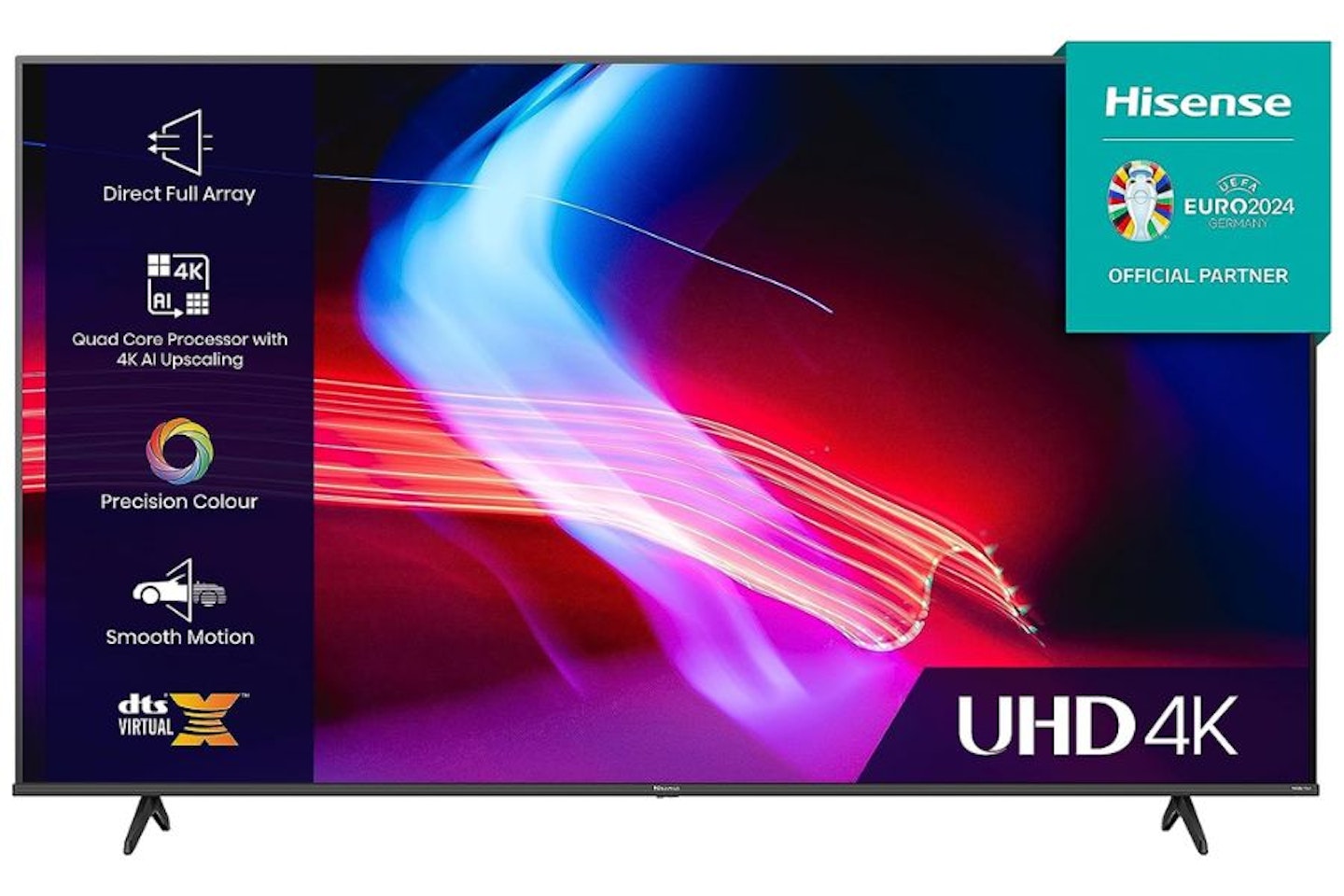
We’re a fan of the Hisense brand for producing reliable TVs that are a genuinely affordable alternative to premium brands. That said, despite being our most affordable 75-inch model here, it didn't make it onto our list of the best budget TVs recently simply due to the price tag. As is usual for a modern 4K TV, this 75-inch TV will intelligently upscale lower resolutions. There’s Google Assistant and Alexa built into this model, as well as smart TV apps. A bonus though is the often missing Freeview Play functionality for watching and catching up on live broadcast TV.
There’s a variable refresh rate built-in. However, as you may expect from a TV at this price point, there is one downside: the standard refresh rate of 60hz and a standard LED screen. This is fine for TV and film viewers, but anyone who wants deeper blacks, and richer HDR performance may want to spend a little more on something else. The same goes for those who want less motion blur in their sports or gaming experiences. If that’s you, you’ll probably want to invest in something like the Samsung 75 Inch QN90B above.
That said, for more casual viewers, this TV is absolutely packed with features that are rarely found together in one model, let alone an affordable one. Not only does this come with HDR for a wider colour palette, but also its slightly superior cousin HDR10+. And then there’s Dolby Vision - the undisputed king of dynamic HDR colour. There’s no Dolby Atmos, but there is DTS Virtual X sound. This will dynamically separate dialogue from any background noise for easier listening.
At less than £800 at the moment, for a 75-inch 4K TV, this Hisense is an absolute steal.
Pros
- Excellent dimming zones for a non-OLED screen
- HDR10+ support is an unexpected addition at this price point
- Dolby Vision
Cons
- The LED panel at 60hz may underwhelm some
Best mid-budget QLED 75-inch TV
Samsung makes it back into our pick of the best 75-inch TVs, this time with their QE75Q60C model. Why? Because it’s mid-budget for a TV of this size. With this QE75Q60C, you have six internal multi-directional speakers instead of eight. This one doesn’t have Dolby Atmos but still has Object Tracking Sound. The screen on this model is a QLED panel rather than the slightly brighter Neo QLED of the Q90B. They’re both 2022 models as well, making this TV the ideal mid-budget option with a lot of bang for your buck.
The 120hz variable refresh rate is present of course, so you’re all set for smooth gaming and reduced motion blur for content like fast-moving sports. One potentially glaring omission from this spec, however, is the anti-reflection and ultra-wide angle screen that’s present on the Q90B. That could make this 75” TV one to avoid in brighter rooms with a lot of reflections where some may need to watch from the sidelines; but for the rest of us, this is a small price to pay for what is essentially an extremely close cousin of a vastly more expensive TV.
There’s excellent voice assistant integration too, with Bixby, Alexa and Google Assistant included. Tizen, Samsung's smart platform, will deliver a snappy way to access all of your streaming apps, and whatever you watch will look better than ever thanks to Samsung's Quantum Processor 4K.
Pros
- Excellent price for QLED TV of this size
- Solid Samsung design and build
- HDR10+ support
- Bixby, Alexa and Google Assistant voice control built-in
Cons
- No Dolby Vision
- The screen has inferior viewing angles compared to the more expensive Q90B
Best OLED 75-inch TV
If you’re a cinephile or addicted to the latest shows streaming in 4K, getting an OLED screen should be at the top of your list. What little OLEDs lose in brightness compared with QLED TVs, they gain in contrast levels and subtlety of colour. HDR10 colour depth is stunning and vibrant, and the lack of a backlight requirement with OLED means that blacks are true and inky. All in all, prepare to revel in a more naturalistic picture which will really increase your immersion. It’s also of course a smart TV with aloof the usual apps and on-demand content for your evening’s entertainment.
That said, if you were looking to game on this 4K smart TV screen once your binge-watching is over, it has an unusually fast response time of 0.1ms; plus low input lag. A couple of killer features here are also the inclusion of gamer-friendly variable refresh rates, Nvidia G-Sync and AMD FreeSync. One thing that gamers are bound to notice is that the panel is naturally a little dimmer, particularly in white areas, than the QLED equivalent. But this is really a nitpick, as the beauty and contrast range of backlight-free OLED screens is more suited to movies and media.
A bonus here, again due to the underlying OLED panel, is the design. This set is light and razor-thin at less than 7mm at its slimmest. So, mounting this on a wall will show off the ultra-low profile for a sophisticated look.
Pros
- Gorgeous screen for deep blacks and rich colours
- Excellent refresh rate
- Minimalist design
Cons
- No HDR10+
Best Full Array LED 75-inch TV
If you’d like a reminder of the benefits of choosing a Full Array LED TV take a look at our guide at the end of the article, but in short: You’re going to get excellent brightness levels, so this is a great option if your room suffers from a lot of direct sunlight. What you lose in areas such as OLED-level blacks and QLED-level HDR performance you gain in terms of budget. Full Array screens are an extremely affordable option compared to its rivals and with only a small dip in quality across the board. This is by no means a budget choice though - you’ll still be getting a massive 75-inch Sony television with all of the usual top-end Sony tech inside it. It's a 2023 model too.
4K UHD and Dolby Vision work together with the extra dimming zones provided by the Full Array backlight. The net result is a very well-balanced picture, with fast response times and DTS Virtual X sound for added impact. There’s a Game Mode, the same excellent feature set in all of Sony’s XR range, which includes its ‘Perfect For Playstation’ extras such as HDR Tone Mapping.
There’s no shortage of bells and whistles for everyday watching though, as you have streaming apps such as Netflix and Prime Video, as well as built-in Alexa voice control. It’ll also upscale any lower-resolution content up to 4K on the fly. All in all, there’s a lot to love about this option from Sony, and it delivers features in spades.
Pros
- Bright picture and excellent HDR performance
- Variable refresh rate and G-sync
- Low latency for gamers
Cons
- As expected, more blooming in dark areas than OLED or QLED due to backlight
Best QLED 75-inch TV for movies
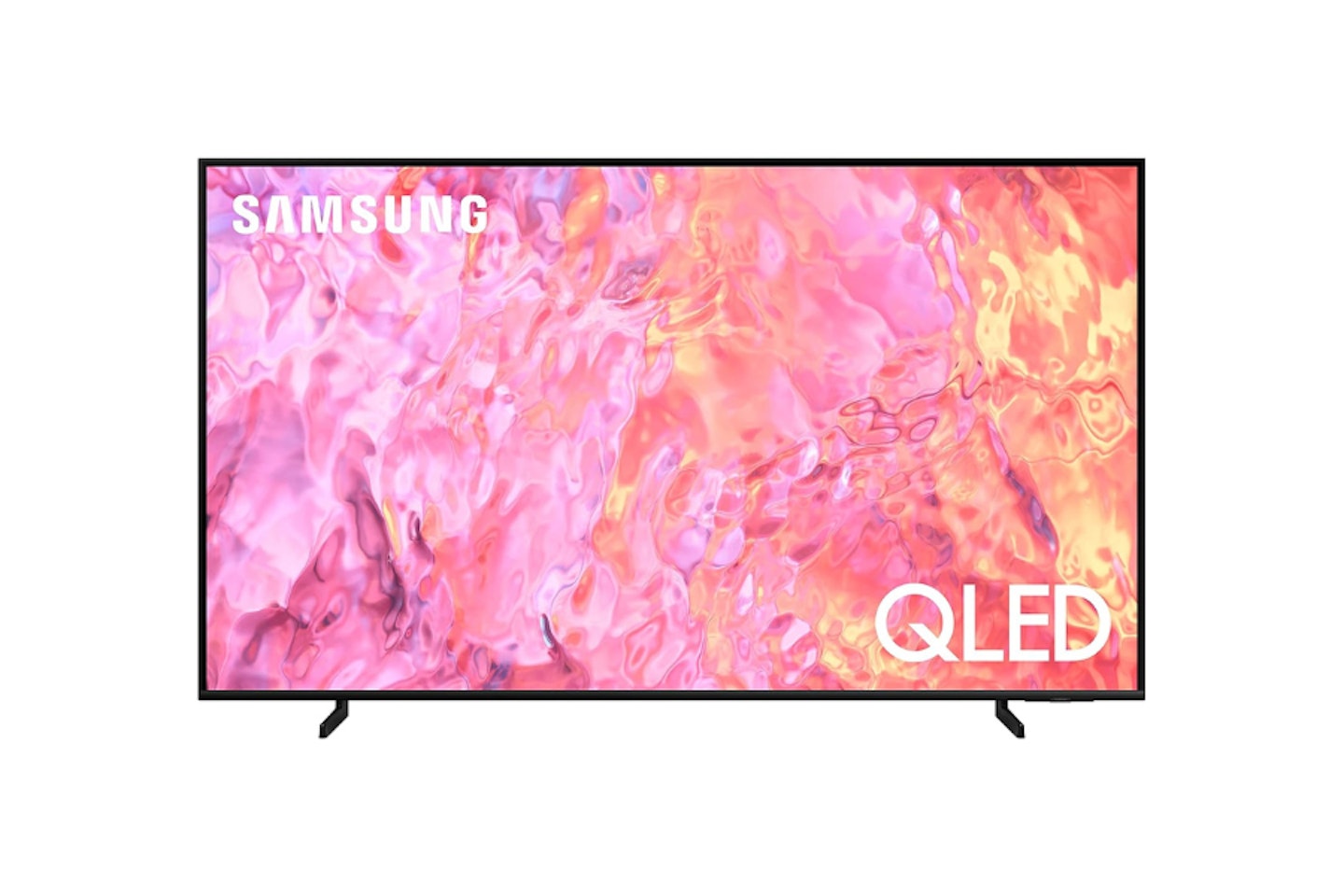
ao.com
We usually favour QLED screens for gaming, but this Samsung Q60C makes a great case for home cinema use. The QLED screen looks brilliant, providing a bright display with no issues. Paired with its crystal processor, you've got a TV that delivers stunning visuals with minimal loading times.
It's not all about the video side though. What really makes the Q60C great for movies is its audio features. The Q-Symphony provides crisp, rich surround sound, and the Object Tracking provides a bit of extra immersion to really pull you into what you're watching.
We do wish that the Q60C had a bit of a better refresh rate. It's not terrible at 50Hz, and it doesn't detract from the overall experience, but there are certainly better refresh rates for the price.
Pros
- Well-balanced audio features
- QLED screen looks fantastic
- Helpful smart assistants
Cons
- The refresh rate is outclassed
Best thin 75-inch TV
The design of this LG UR78 TV is superb. One of the troubles of big, 75-inch TVs is that they tend to take up a lot of room, but this one is able to fit quite flush against a wall. Even its thin bezels add to its sleek, modern look, plus they give you a bit more screen space for the size.
Of course, a thinner build usually means a bit less power, but the UR78 has a few tricks to get around that. It uses its α5 AI Processor 4K Gen6 to upscale the content you watch, meaning even shows that aren't in 4K can be brought up to it. It also uses AI in its sound system, which helps it give you a sense of surround sound audio.
Pros
- Unique AI 4K upscaling
- Use of AI features to further enhance visuals and audio
- Sleek design with minimal bezels
Cons
- Can be a bit tricky to set up and use initially
Best value Samsung 75-inch TV
Samsung makes reliably good TVs, which is why it's especially nice to see one at a more affordable and budget-friendly price point. The decreased cost doesn't mean it's lower quality though, as the CU7110 is a beast in the audio department. We've mentioned Object-Tracking, Q-Symphony, and Adaptive Sound previously, so it's no wonder that it's a delight to see them all on one TV.
Aside from a mediocre refresh rate, our only notable complaint about this TV is its operating system. While this is completely up to personal preference, Tizen isn't our favourite OS. That said, it's only a minor drawback.
Pros
- Great suite of audio features
- Great contrast
- Brilliant value for the performance
Cons
- The operating system may not be to everyone's liking
Best ultra-budget 75-inch TV
We've already discussed a brilliant budget TV, but if you want to go even further, consider this TCL 75P639K 75-inch 4K Smart TV. It's another TV with super thin bezels, which we always like to see and is especially nice for the price. A refresh rate of 60Hz might not be jaw-dropping, but it is reliable. Combined with the Game Master feature that adjusts your settings to tailor the visuals for gaming, you've got an affordable TV perfect for a teenager's room.
Its main shortcoming is in the audio. While it is nice to have Dolby Atmos, the speakers aren't the most powerful. As such, you might want to consider pairing this TV with a soundbar.
Pros
- Brilliant, budget-friendly value
- Very thin bezels
- Minimal latency makes it suitable for gaming
Cons
- Audio is so-so
Best 75-inch TVs: Buyer's guide
Choose the best 75-inch TV panel
It probably goes without saying that any 75-inch TV will have a 4K resolution or higher. They’re also likely to be using one of four lightweight panel types: OLED, QLED, Full Array LED, or Mini LED. While each has its pros and cons, they are equally modern display technologies. There’s a breakdown of these in our jargon-buster at the end of the article, plus some FAQs. Decide what you want from your viewing and you’ll find it hard to make a poor choice here.
Consider size and position
When it comes to your room and decor, bigger isn’t always better. Okay, so you might be able to fit a 75-inch model into your living space, but will it cramp your style? Make sure that you have the room to either wall-mount a set this large or that the best TV stand you’ve found for the job will actually fit (and support the TV’s weight) without causing problems.
You’ll also need to consider where you’ll be sitting to watch a TV of this size. A quick rule of thumb is that you’ll need to be around 12.5 feet away for comfortable viewing. If you’d like more advice on this, check out our full article on choosing the right size TV.
Guide to panel types
OLED
Organic LEDs don’t require a traditional backlight to create a bright enough picture and can be controlled individually, pixel by pixel. Therefore, OLED screens don’t produce that grey-ish lighting ‘bloom’ around bright objects, most obviously present on standard LED screens. Also, the viewing angle of OLED panels is wider than LED. Well-suited to movie buffs and gamers; the refresh rates are high, and black levels are super-deep with excellent sharp highlights.
QLED
QLED was initially developed by Samsung but is now also offered by other manufacturers like Hisense and TCL. The ‘Q’ here indicates the presence of Quantum Dots instead of organic LEDs. These dots generate colours differently and the emitted light is stronger, so can produce brighter images and more intense, truer colours. But, they’re backlit separately, so control over blacks and highlights can lead to a slightly inferior contrast compared to OLED. If you're interested in finding out more, we've got a guide to the best QLED TVs.
Mini LED
Miniature LEDs (Light Emitting Diodes) also deliver a very high-resolution alternative to OLED. As you’d expect, with more densely-packed LEDs also comes the ability to finely control brightness and contrast. Local dimming zones to drive deeper and truer blacks.
Once again, the overall brightness a Mini LED panel can throw out is a little better than OLED. This makes for more accurate HDR performance. But, Mini LEDs don’t have the near-infinite level of contrast that OLEDs have when turned off. So, depending on the model, you may see some light bleed between dark and light areas. The viewing angle is also significantly less than that of OLED.
Full Array LED
Whereas a standard LED screen will be backlit by rows of LEDs along its edges, a Full Array screen is backed up with a corresponding ‘full array’ of backlighting LEDs behind each pixel. This backlighting can be locally controlled, but it’s not as precise as OLEDs. It’s a slightly cheaper but excellent alternative technology to those above, which delivers a good qualitative balance between colour, brightness, contrast and resolution without necessarily beating the performance of other panels in each of those areas.
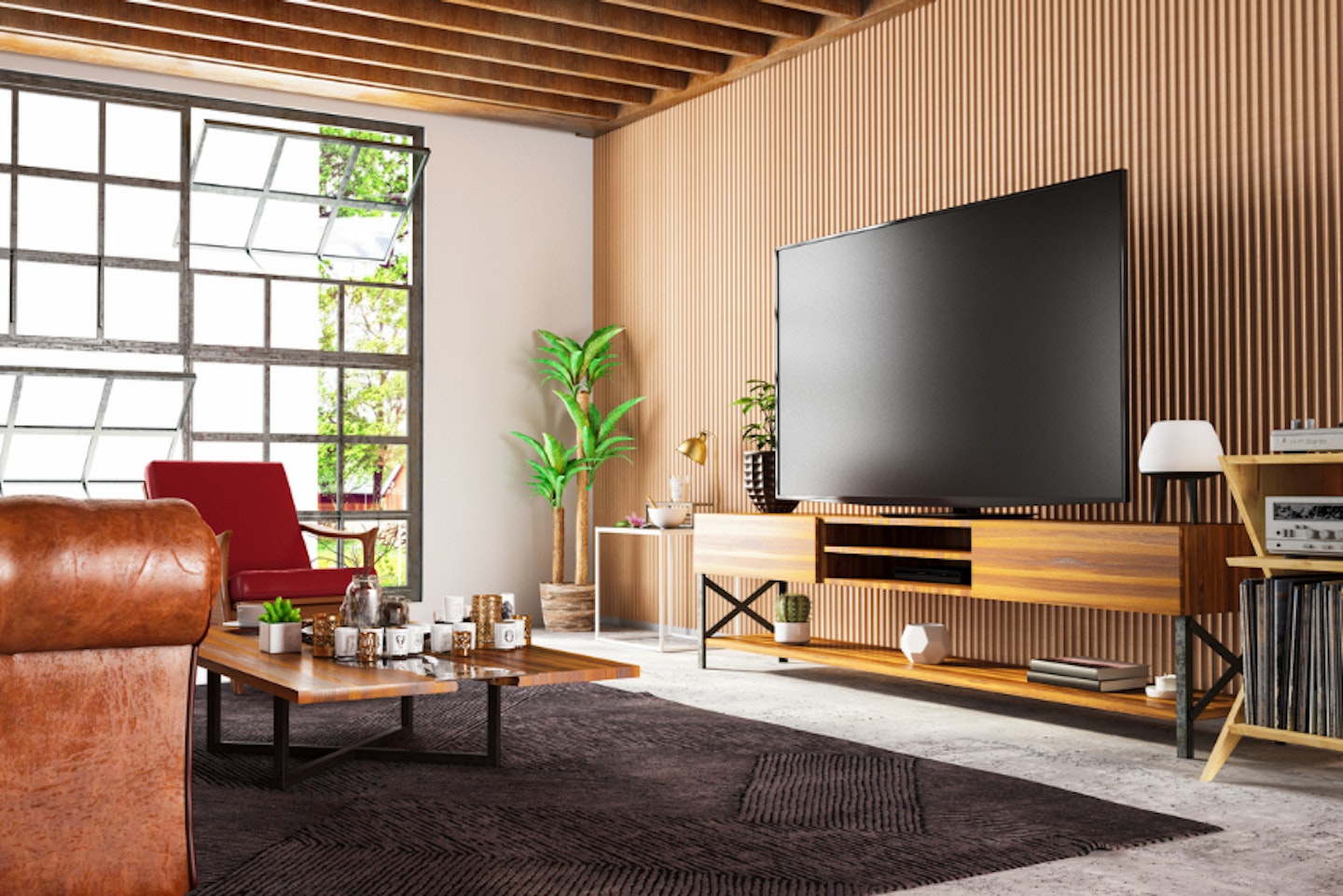
The best 75-inch TVs of 2024: Jargon buster
HDR and UHD
HDR stands for High Dynamic Range. This works to get as much light, detail and depth into the colour range of your picture. Whites are brighter, blacks are blacker, and it delivers a massive range of over one billion colours. HDR10+ is the same, but slightly extended range-wise, thanks to the transfer of extra metadata between the source and the TV itself. HDR comes in slightly different flavours though - with HDR (HDR10), HDR10+, and Dolby Vision being close cousins; each has a slight improvement over the other.
Ultra High Definition, or UHD, is really another term for 4K. A 4K picture is roughly four times the size of the last generation of ‘HD’ screens (commonly made up of 1920 x 1080 pixels).
HDMI 2.1
HDMI 2.1 is a digital connection that is capable of carrying both sound and picture information; With enough bandwidth to support higher resolutions and refresh rates. Namely, 4K UHD at 120fps and 8K UHD at 60fps.
For most, this won’t be relevant, but gamers, in particular, will want to pay attention to this feature. Only with HDMI 2.1 connection will the Xbox Series X and PlayStation 5 be able to fully flex their might.
Refresh rate and VRR
This is the number of times the screen refreshes the entire displayed image, per second. Measured in Hertz (Hz) a 60Hz TV will refresh an image 60 times, and a 120Hz TV will refresh an image 120 times. Therefore, the higher the refresh rate, the smoother the moving image appears to the eye. This is particularly important for gamers or those who watch fast-moving action like sports.
VRR, or variable refresh rate, also provides a huge boost for gamers. Often supported in various ways (such as Nvidia’s G-Sync, and AMDs FreeSync technologies) this means the TV will actively monitor the content that’s being displayed and vary the screen’s refresh rate accordingly. This makes for even smoother and more detailed motion depending on the scene or movement of your game - especially when viewed on one of the best 75-inch TVs.

Frequently asked questions
Do 75-inch TVs cost a lot to run?
Even premium brands - such as the best Sony TVs - can only achieve so much energy efficiency while maintaining quality output. As you’d expect, the sheer size of the panel itself is always going to mean higher consumption than a 50-inch TV or smaller. But, the good news is that running costs are always going to be in a similar ballpark - most TVs are 50-inch or larger these days and so you’re unlikely to notice much of a difference in your energy bill, as the amount of circuitry that drives the panel is more or less the same from model to model. If you're concerned with power consumption, it's best to look at the official energy label for the TV and go from there.
What size TV do I need?
As you’re reading this article, you’ve probably been seriously considering getting a very large set. But, as mentioned earlier, you’ll need to factor in your viewing distance before you splash any cash. Here’s a ballpark guide to minimum viewing distances for HD or 4K content based on screen size:
40 inches - 80 inches (6.7 feet)
50 inches - 100 inches (8.3 feet)
60 inches - 120 inches (10 feet)
75 inches- 150 inches (12.5 feet)
What size is a 75-inch TV?
Surely it’s 75 inches across, right? Well, firstly screen sizes are normally measured diagonally from corner to corner. Therefore you can expect the horizontal width of your chosen TV to be less than 75 inches. So, what are the dimensions of a 75-inch TV? Well, it will vary. The diagonal measurement is usually the visible part of the panel and doesn’t include any bezel around the screen. If you’re concerned with getting an exact fit with your available space, always read the technical specification for the TV for exact dimensions; and remember: some of the dimensions will be listed with or without the stand fitted.
Chris Duffill is a Tech Product Writer for What's The Best and Yours. His background includes writing, editorial, marketing, design, video production and photography.
He specialises in home entertainment and audiovisual tech, including speakers, amplifiers, turntables, streaming media players, and TVs. He is also one of our resident experts in computing (PCs, tablets, smartphones, smartwatches), DSLR photography and all kinds of digital cameras. He also writes about retro gaming, game consoles and various electronic gadgets. If it plugs in, lights up or makes a noise, he’ll write about it.
Subscribe to the What’s The Best Newsletter to keep up to date with more of the latest reviews and recommendations from the rest of the What’s The Best team.
